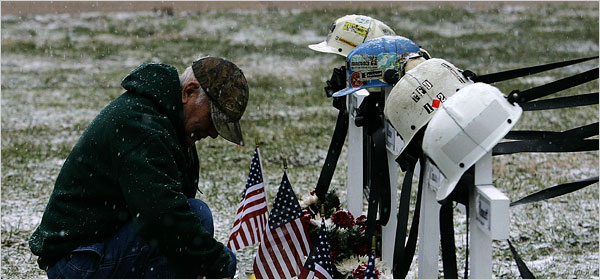An explosion in West Virginia’s Sago mine on January 2, 2006 trapped 13 miners underground and catapulted mine safety into the nation’s consciousness like no other workplace disaster in decades. Only one miner of the 13 survived. Subsequent mine explosions and fires in the Aracoma and Darby mines, as well as numerous other coal mine accidents, largely stemming from increased mine activity (as a result of higher energy prices), neglected maintenance, crumbling infrastructure and insufficient training led to 47 coal mining deaths in 2006, a ten year high and more than twice as many as the previous year. Faulty respirators, poor communication between miners and the surface contributed to the tragedies.
But more important, the coal mine disasters of ’06 revealed the Bush administration’s abdication of its responsibility to ensure safe workplaces for this nation’s miners. Investigations by aggressive reporters like the Charleston Gazette’s Ken Ward showed how the Bush administration filled MSHA with industry insiders, deep-sixed numerous regulations that would have prevented or reduced the consequences of the mine accidents, cut the number of mine inspectors, failed to cite safety violations and failed to collect fines from those mining companies that were cited. The mining tragedies of 2006 revealed to Americans the human toll of the Bush administration’s close ties to the industries it was supposed to regulate. No longer able to deny that the Emperor was as naked as a jaybird, in record time, Congress overwhelmingly passed the MINER Act which started the process of implementing needed improvements in the nation’s mine safety law. New mine safety laws were also passed in West Virginia and Kentucky.
The new federal and state laws doubled to two hours the amount of emergency air supplies miners must have with them at work and required mines to store extra air packs underground. Other changes mandated more rescue teams and ordered mines to install high-tech communications and tracking devices and emergency shelters to help trapped miners survive, among other things.
